Aloe vera is one of the most popular houseplants worldwide, loved for its low maintenance, striking appearance, and medicinal benefits. With its fleshy, spiky green leaves and soothing gel, aloe plants are not just decorative—they also serve as a natural remedy for burns, cuts, and skin irritation. But while aloe is famous for its resilience and ability to thrive in dry conditions, knowing how often to water an aloe plant is crucial to its health and longevity.
Many plant lovers assume aloe requires little to no water, while others may unknowingly overwater it, leading to root rot. In this comprehensive guide, we’ll explore how to properly water aloe plants, taking into account seasonal changes, potting conditions, soil type, and plant size. Whether you’re a novice or an experienced gardener, understanding these watering principles will help your aloe thrive for years to come.
Understanding Aloe’s Natural Habitat
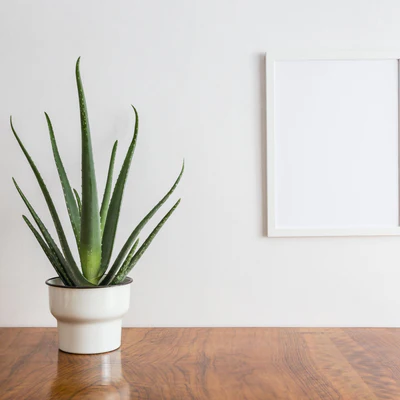
To properly care for any plant, it’s important to understand where it comes from. Aloe vera is a succulent that hails from the dry, arid regions of the Arabian Peninsula, North Africa, and other parts of the Middle East. In the wild, aloe grows in rocky, sandy soils with minimal rainfall and high temperatures.
This natural background means:
- Aloe plants are highly drought-tolerant.
- Their thick leaves are designed to store water.
- They’re more prone to damage from overwatering than from underwatering.
How Often Should You Water an Aloe Plant?
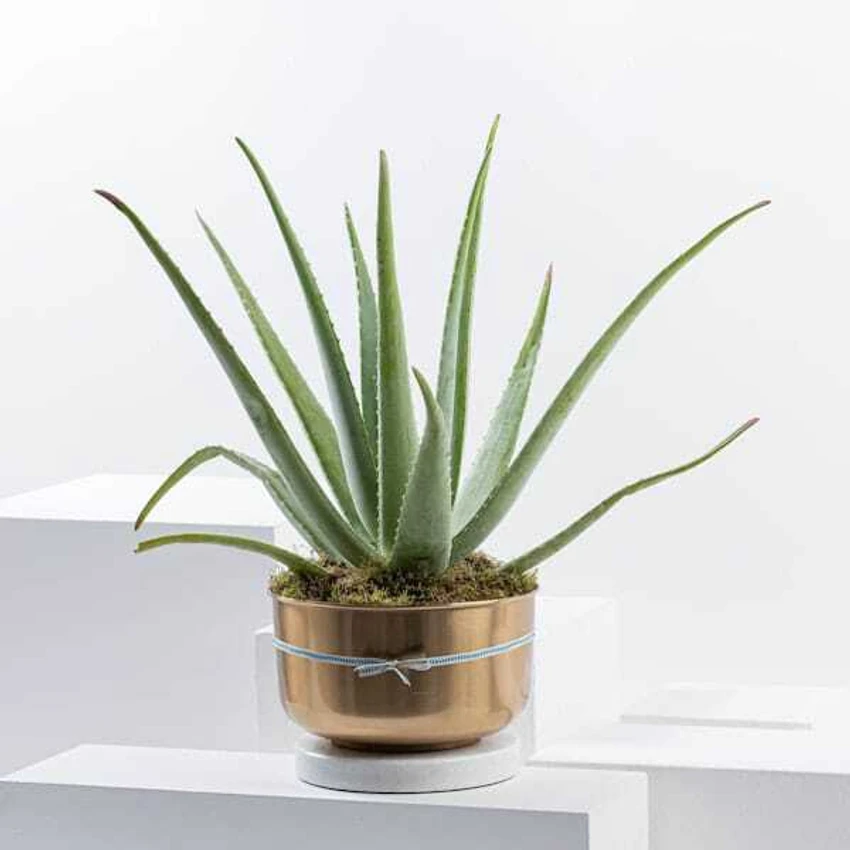
The general rule is:
Water your aloe plant every 2–3 weeks in the growing season (spring and summer), and every 4–6 weeks during dormancy (fall and winter).
However, this is a guideline, not a fixed rule, and watering frequency can vary based on several factors.
Factors That Affect Aloe Watering Needs
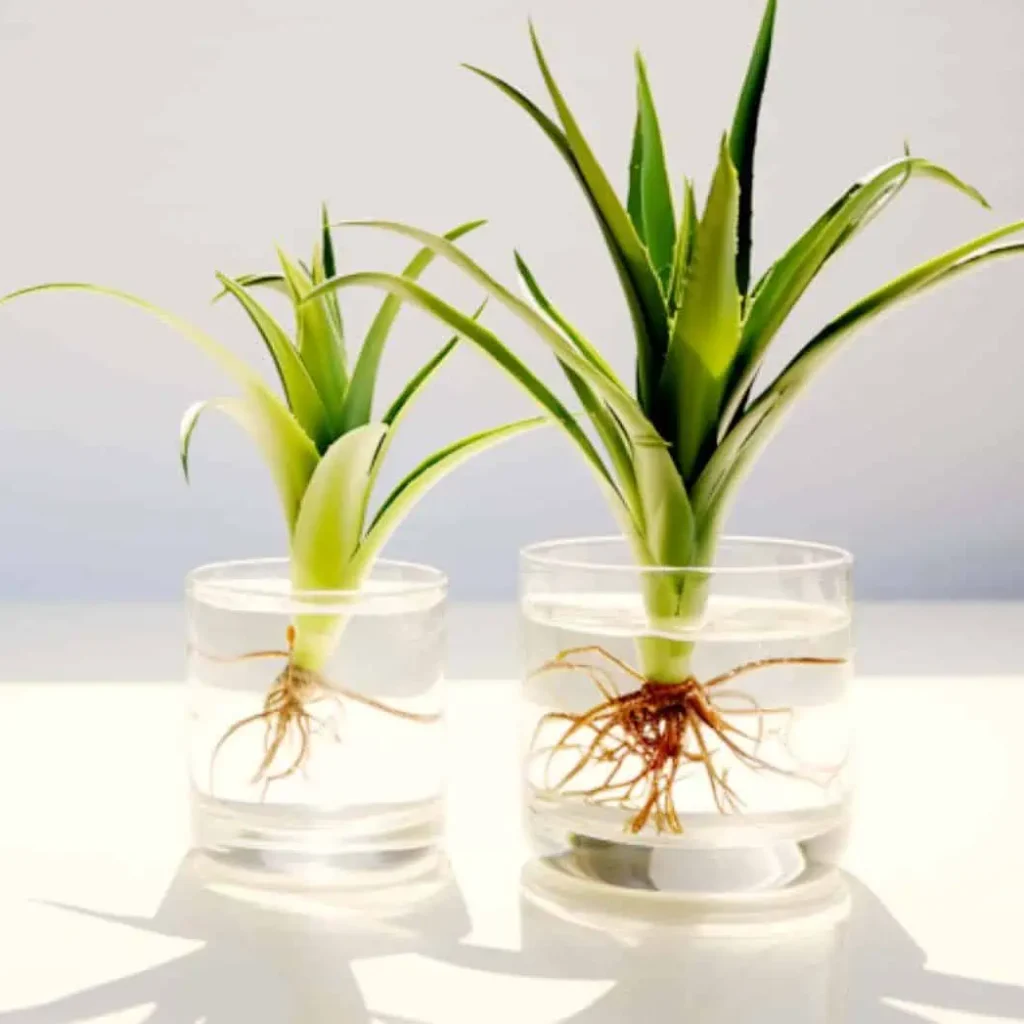
1. Season and Growth Cycle
- Spring and Summer: Aloe grows actively in warmer months and uses more water. Water every 10–14 days if the soil dries out faster.
- Fall and Winter: Aloe slows its growth and needs less moisture. Reduce watering to once every 3–4 weeks.
2. Pot and Drainage
- Always plant aloe in a pot with drainage holes.
- If your pot retains water, the soil will stay wet for too long, increasing the risk of root rot.
- Clay pots are better than plastic because they allow water to evaporate more quickly.
3. Soil Type
Aloe vera thrives in well-draining, sandy or cactus mix soil. Avoid heavy garden soil or moisture-retentive mixes.
Use:
- Commercial cactus/succulent potting mix, or
- A DIY mix: 1 part potting soil + 1 part sand or perlite + 1 part pumice or gravel
The faster the soil drains, the more frequently you may need to water.
4. Light Exposure
Plants in bright, indirect sunlight or full sun may need water more frequently than those in shaded or indoor spots.
- More light = faster evaporation = slightly more frequent watering
- Indoor aloe in low light dries out more slowly
5. Size of Plant and Pot
- A large aloe in a small pot may dry out quickly.
- A small aloe in a large pot may hold too much moisture.
Adjust your watering schedule accordingly based on pot size and plant maturity.
How to Know When Your Aloe Needs Water
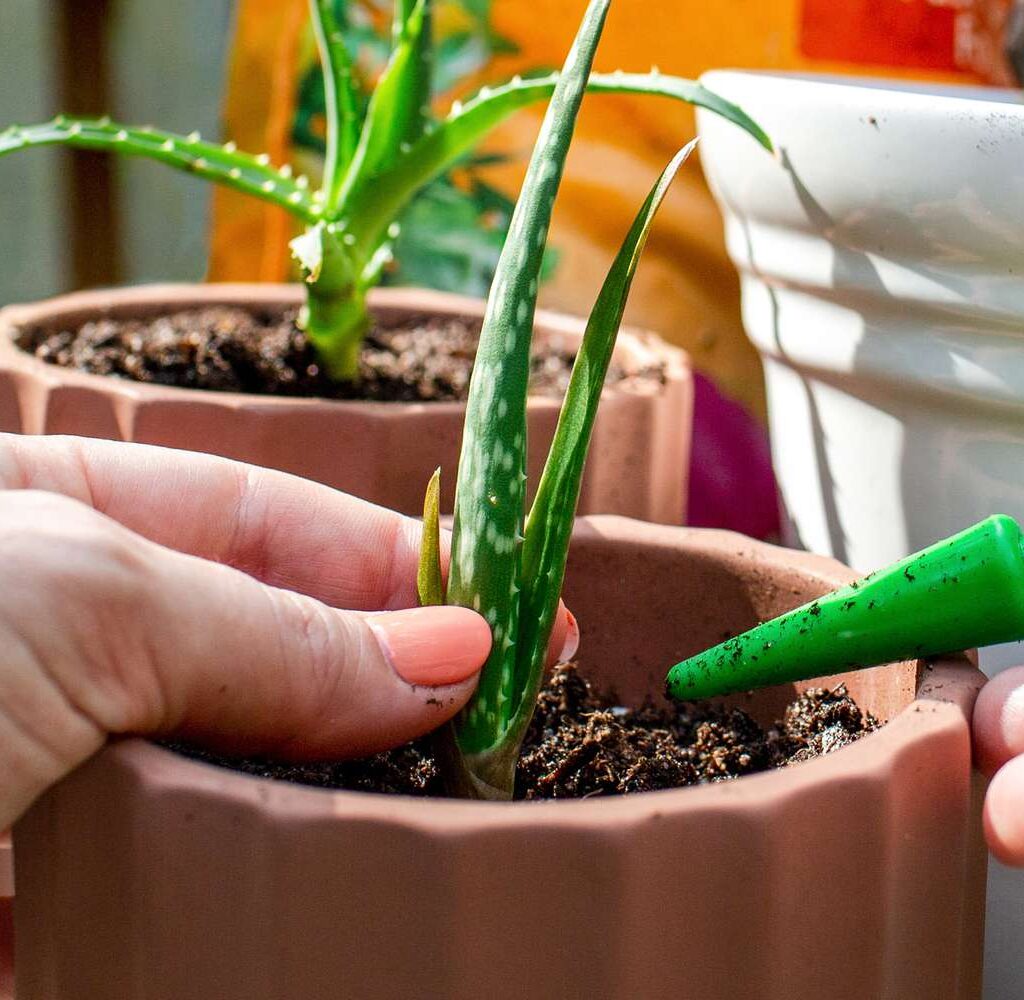
Instead of relying only on a calendar, observe your plant and the soil. These are the signs to check before watering:
1. Soil Dryness Test
Insert your finger 2 inches into the soil. If it feels dry at that depth, it’s time to water.
2. Wrinkled or Curling Leaves
A slightly underwatered aloe shows wrinkled, curling, or shriveled leaves. This is a sign it needs water soon.
3. Limp or Bending Leaves
Healthy aloe leaves stand firm and upright. Limp, soft leaves may indicate dehydration—or overwatering.
4. Pale or Yellowing Leaves
If leaves turn yellow, mushy, or start browning at the base, it’s likely a sign of overwatering or root rot.
5. Weight of the Pot
Lift the pot—dry soil is noticeably lighter. This trick is especially helpful for smaller potted plants.
How to Water an Aloe Plant Properly
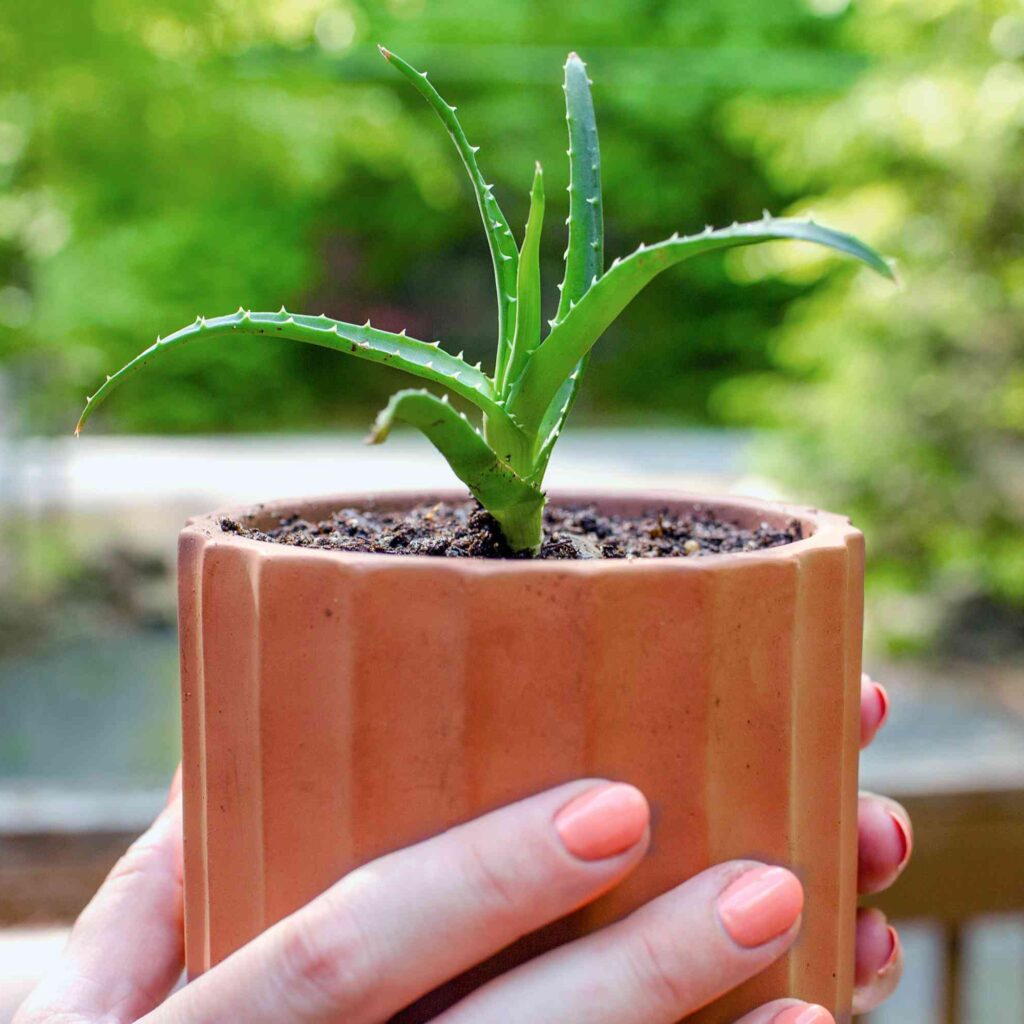
Step-by-Step Watering Instructions:
- Check the Soil: Make sure the top 2–3 inches are completely dry.
- Water Deeply: Water until it flows out of the drainage holes.
- Drain Excess Water: Never let the pot sit in a saucer of standing water.
- Let the Soil Dry Out: Wait for the soil to dry completely before watering again.
Pro Tip: It’s better to underwater than overwater aloe. A thirsty plant can recover quickly—roots rotting in wet soil may not.
Common Aloe Watering Mistakes
1. Overwatering
This is the #1 killer of aloe plants. Roots become waterlogged, oxygen is cut off, and rot sets in quickly. Symptoms include:
- Mushy or translucent leaves
- Foul smell from soil
- Sudden leaf collapse
2. Watering on a Schedule Without Checking Soil
Always check the soil’s moisture level before watering. Weather and indoor conditions change frequently.
3. Using Pots Without Drainage
Without a drainage hole, even one overwatering incident can be fatal. Always use a well-draining pot.
4. Splashing Water on Leaves Frequently
Although occasional misting won’t harm aloe, frequent wetting of leaves can lead to fungal problems or rot, especially in humid environments.
Watering Aloe Indoors vs Outdoors
Indoors:
- Less sunlight and airflow means slower drying.
- Water less frequently — usually every 3–4 weeks.
- Use bright, indirect light to mimic its native environment.
Outdoors:
- Hotter temperatures and wind dry out the soil faster.
- Water every 7–14 days, especially in summer.
- Protect from heavy rain or move pots under cover.
Bonus: Aloe Watering Tips for Specific Scenarios
Repotting Aloe
After repotting, wait 5–7 days before watering to allow roots to settle and avoid shock.
Propagated Offsets (Pups)
Let offsets dry for 1–2 days before planting. Then water lightly and wait until new growth appears to resume normal watering.
Dormant Aloe in Winter
Water very sparingly — once every 4–6 weeks — and only if the soil is bone dry.
Conclusion
Watering an aloe plant may seem simple, but it’s all about balance and observation. These hardy succulents have evolved to survive harsh, dry conditions and are far more tolerant of drought than excess water. The key is to water deeply but infrequently, allowing the soil to fully dry out between sessions.
To recap:
- Every 2–3 weeks in summer, every 4–6 weeks in winter
- Use well-draining soil and pots with drainage holes
- Always check the soil before watering
- Adjust based on climate, light, and plant size
By understanding your aloe plant’s natural needs and signs, you can grow a healthy, vibrant aloe that not only enhances your space but also provides fresh, medicinal gel right at home.

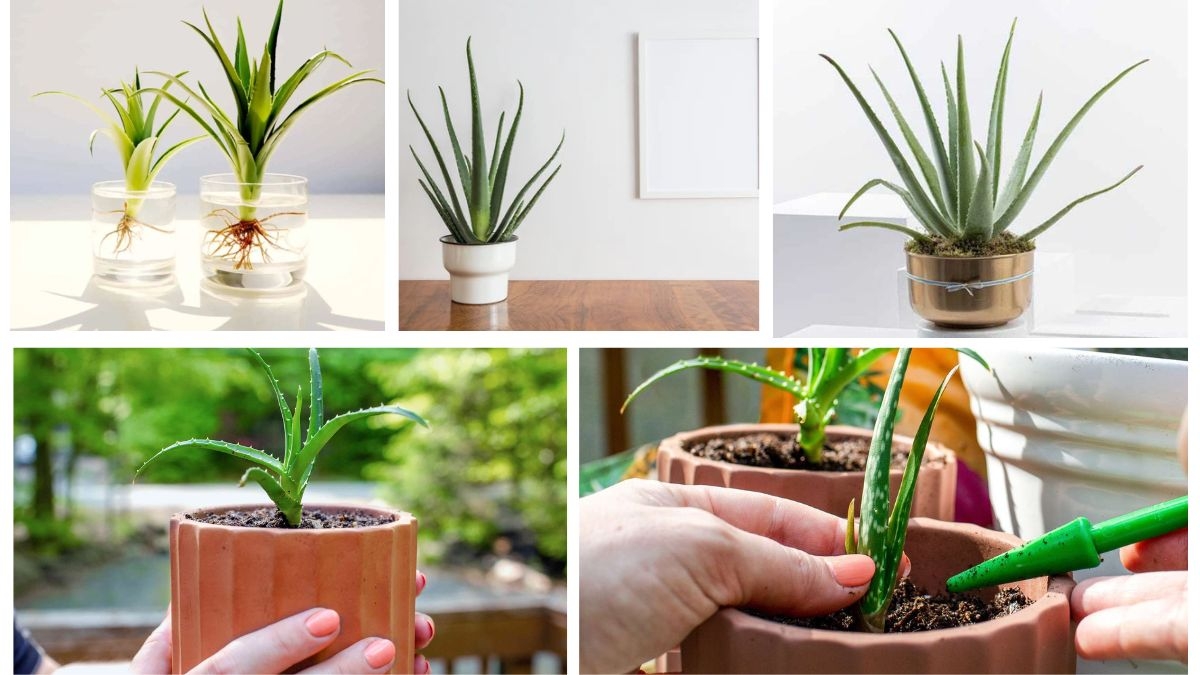



Leave A Comment